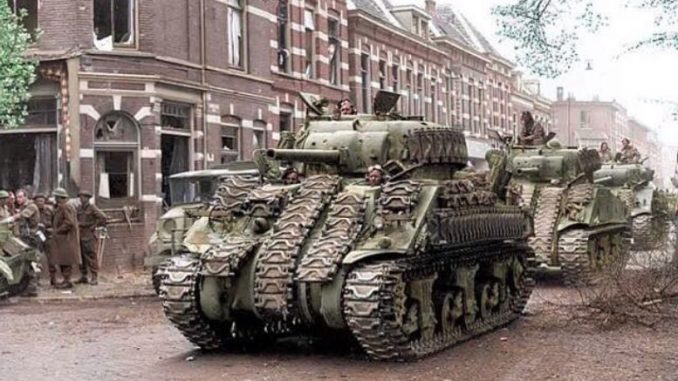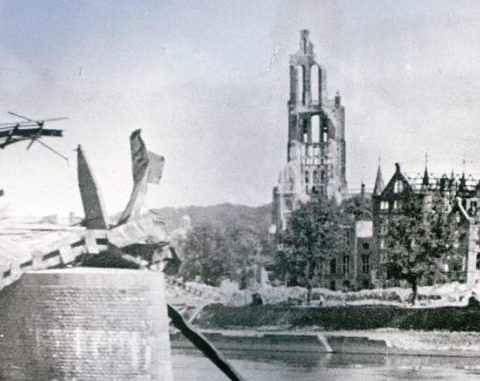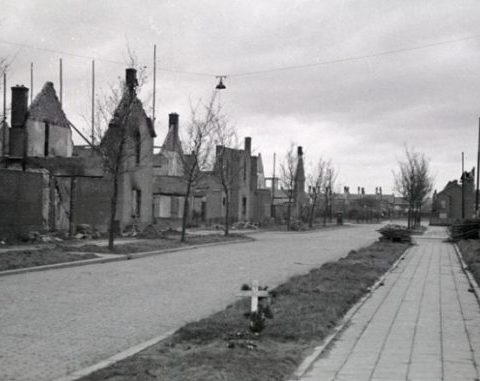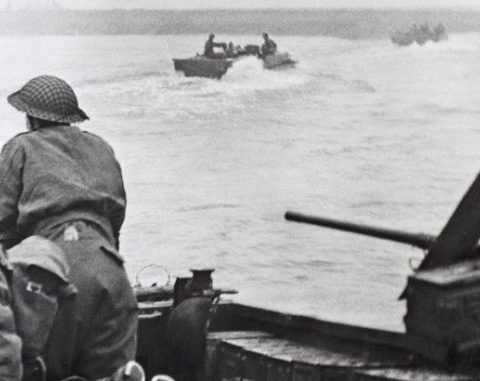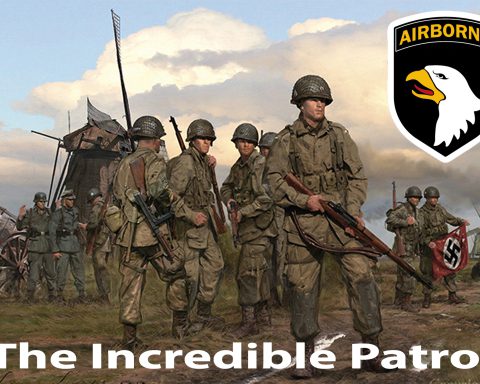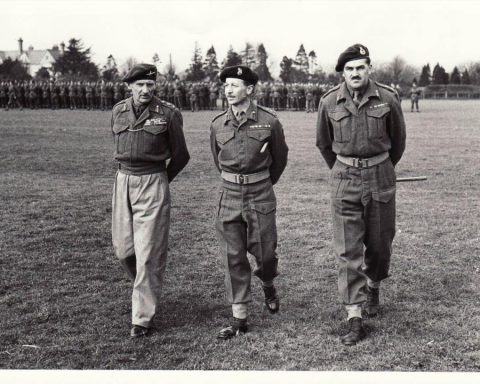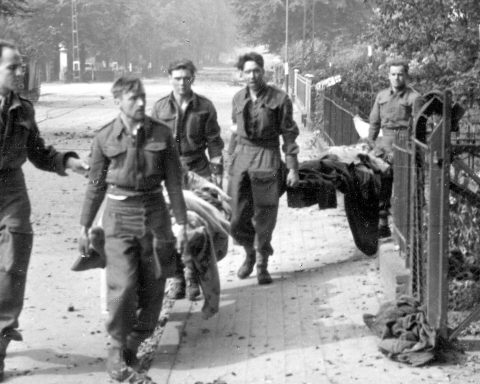The ground for the second Battle of Arnhem was laid while the Battle of Arnhem was still raging in full force in September 1944. On September 23, 1944, the German occupiers decided to evacuate the entire population of Arnhem.
With the exception of some firefighters, police officers and Burgers’ zookeepers, all residents of Arnhem had to leave the city. Two days later the city was empty. Arnhem had become a ghost town.
As a result, the liberation of Arnhem, also known as ‘the second Battle of Arnhem’, took place without Arnhem residents being aware of it.
The liberation of Arnhem is a highly underexposed aspect of Arnhem history. How little attention there is for the liberation of Arnhem is evident from the Wikipedia page on the subject. It’s not even there. At least: not in Dutch.
(In English, French and Portuguese…)
There is no memorial for the more than 60 British people who died during the liberation of Arnhem. Nothing in the city reminds us of the battle that lasted more than three days in April 1945.
It is, to say the least, very strange that there is virtually no attention for the fighting in Arnhem. The vast majority of the war damage in the city occurred during these battles, and not during the Battle of Arnhem in September 1944.
Bailey bridges
The liberation of Arnhem was given the name ‘Operation Anger’. During this battle, the British of the 49th Infantry Division (the ‘Polar Bears’) supported by the 79th British motorized division fought their way through Arnhem to liberate the city more than six months after the failed Battle of Arnhem.
Arnhem. A city so nice, they liberated in twice.
Officially the second Battle of Arnhem started on April 11, 1945, but in fact the battle started two weeks earlier. At the end of March, the last German defenders south of the Rhine near Arnhem were eliminated by the Allied troops.
This meant that ‘Arnhem South’, which did not mean much at the time, had already been liberated. Elden, the Praets and Malburgen were already in Allied hands.
The Allies’ plan was initially to cross the Rhine west of Arnhem by boat. After building an emergency bridge, the Allies wanted to invade Arnhem via Oosterbeek. They knew the way.
Because the Germans saw through the plans and mobilized troops to repel the attack, plan B (or plan C if you include Market Garden) was decided upon.
Instead of an attack via the Rhine, it was decided to attack via the IJssel. This had the additional advantage that the Canadians could advance via several (emergency) bridges not only to Arnhem, but also to Deventer and Apeldoorn.
Artillery bombardment
The British had no idea how strongly Arnhem was defended. In fact, it is still not entirely clear how many Germans there were in Arnhem in the aftermath of the Second World War. Estimates range between 1,000 and 3,500 enemy troops.
The British decided to err on the side of caution. They therefore started the fighting with a huge artillery bombardment of the city. It was one of the heaviest artillery barrages carried out by the British during the Second World War.
A single battery of eight guns could fire more than 600 shells into the city in ten minutes, and the Allies deployed several artillery batteries during the liberation of Arnhem. In addition, aircraft were also used to bombard the Germans present in the city.
The damage caused by the artillery bombardment in the city was immense. This damage was in addition to the bombing of the Rhine Bridge after the Battle of Arnhem in October 1944.
By destroying the Rhine Bridge, the Allies wanted to prevent the Germans from being able to use the bridge any longer to send troops over the bridge.
Destroying the Rhine Bridge did not happen without a fight. An initial bombing by American bombers missed its target and ended up in the city center. Only during a second bombardment was the Rhine bridge also hit.
After the war, an inventory was made that only 500 houses in the entire city had remained undamaged.
AKZO
After the guns fell silent on April 11, 1945, the British started crossing the IJssel in the evening. In the dark, a bridgehead was quickly formed west of Westervoort.
At that time, an emergency bridge was already ready at Doornenburg, which was sailed to the bridgehead. After the bridge was in place, the Polar Bears were able to cross the IJssel in large numbers.
The first troops who entered Arnhem were met at the AKZO factory (then Enka) by Germans who had entrenched themselves in the complex.
Only after the British deployed tanks did they manage to drive out the Germans after almost a day and were they able to advance further to the center of Arnhem.
Here and there in the city were small or larger groups of German soldiers who defended the city against their better judgment. In the evening of April 13, after two days of sometimes fierce fighting, the British took control of most of Arnhem.
Yet the Germans did not give up the fight. On April 14, Dutch SS men from the 34th grenadier division Landstorm counter-attacked with tanks. The Dutch SS were only driven back after heavy fighting.
On April 15, the Polar Bears reached Burgers’ Zoo and finally had all of Arnhem in their hands.
Ghost Town
The British had liberated a ruined, empty town. After the evacuation of the Arnhem residents in September 1944 and the massive looting by the Germans, Arnhem had become a ghost town that was also severely damaged by the war.
Canadian war correspondent Matthew Halton described Arnhem as “an abandoned, burning shell”. After the war, veterans said that walking around Arnhem felt like walking around a tomb.
The war diary of the Polar Bears reports that during the entire war the British did not encounter a city that had suffered more from the war violence than Arnhem.
After the liberation and the end of the Second World War, the expelled Arnhem residents were able to return to their city, of which little was left.
Reconstruction could begin.

